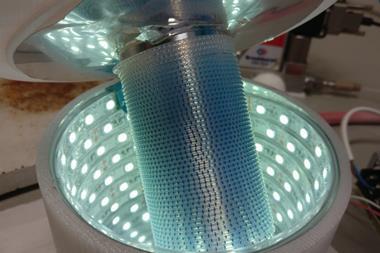There’s more to chemistry than the round-bottomed flask
It’s ironic that chemists are experts at change, except when it comes to their own practice. Mark Gilligan recently wrote about chemists’ reluctance to adopt flow chemistry as an example of this innate resistance to change. I have seen that same resistance, and I understand it. Why would you suddenly change your habits and embrace an expensive new technology?
Gilligan argued that part of the problem is that chemists are often put off when they try to build their own equipment and it doesn’t work – unlike the off-the-shelf machines he sells. But in my experience, this doesn’t have to be true. Flow chemistry is a perfect example of the challenges new ideas and technologies face in overcoming established, traditional methods. And the best way to overcome these challenges is education.
Education is key
I was not trained in flow chemistry. But when I was first exposed to the field during my postdoc in 2010, it was love at first sight. My fellow postdocs were not as enthusiastic; ‘say no to flow’ was a popular slogan. Indeed, while flow has gained significant popularity, it still splits the field of chemistry into believers and non-believers. This is unfortunate, because the flow chemistry literature shows convincingly that there are clear benefits for some reactions, in particular for photochemistry, electrochemistry, multiphase chemistry and for handling hazardous reagents.
Yet the chemistry curriculum still focuses almost exclusively on round-bottomed flasks – flow chemistry is not even mentioned. This is dismaying, because our students are precisely the ones who should be exposed to new ideas – they are not yet biased and are open to new, innovative technologies. If we want to enable the next generation of chemists to push the boundaries of our field, we have to embed the latest research and technology in every layer of our curriculum, starting with the earliest years. At Eindhoven University of Technology, I have implemented flow chemistry in the undergraduate practical course – our students assemble their own reactors and test them, and they find it really rewarding.
That’s the strategy we prefer in my group’s lab as well. We don’t have a single commercial flow apparatus – we only have what we’ve built ourselves. In fact, the majority of all published flow chemistry research has been performed using such DIY devices. You can assemble some cool flow reactors with cheap polymer or stainless steel capillaries and reusable microfluidic fittings. You still will need some pumps, and yes, you need to select them carefully so that they’re appropriate for your system, but these are widely applicable in your lab. The whole thing can cost less than €2000.
Moreover, the low cost of DIY equipment means every student in my group has multiple setups. This increases the pace of scientific discoveries substantially. But financial savings are the smallest benefit of a DIY approach. Building your setup provides you with a deeper understanding of the technology – so if it is damaged, you can easily repair it. And you can tailor your reactor design to the needs of the chemistry and make small improvements on the fly. And while it is useful to understand the engineering principles behind flow, you don’t need a degree in chemical engineering.
Inside the black box
There is genuine pedagogic value in designing your own equipment. Students become more creative and develop a more interdisciplinary mindset. Often, chemists and engineers barely speak the same language. Flow chemistry can serve as a bridge between them and creates a common understanding. My colleagues in the chemical industry value people with these skills because it mitigates the delays when projects are handed over from one group to the other.
Of course, commercial devices are also valuable, particularly in enabling inter-lab reproducibility, and if you don’t have the time to invest in learning about flow, then the option is there to open your wallet and purchase a ready-to-go system. But when a new technology matures to the point that there is sufficient demand for a commercial product, such devices can be treated as black boxes. In an education setting, the emphasis should be on developing understanding: learn to cycle with a cheap bike, which you repair and maintain. Then, when you feel comfortable, buy that fancy racing bike.
Put flow chemistry in your curriculum and give students the broadest experience of making molecules. Let them decide which ideas have a future.













1 Reader's comment